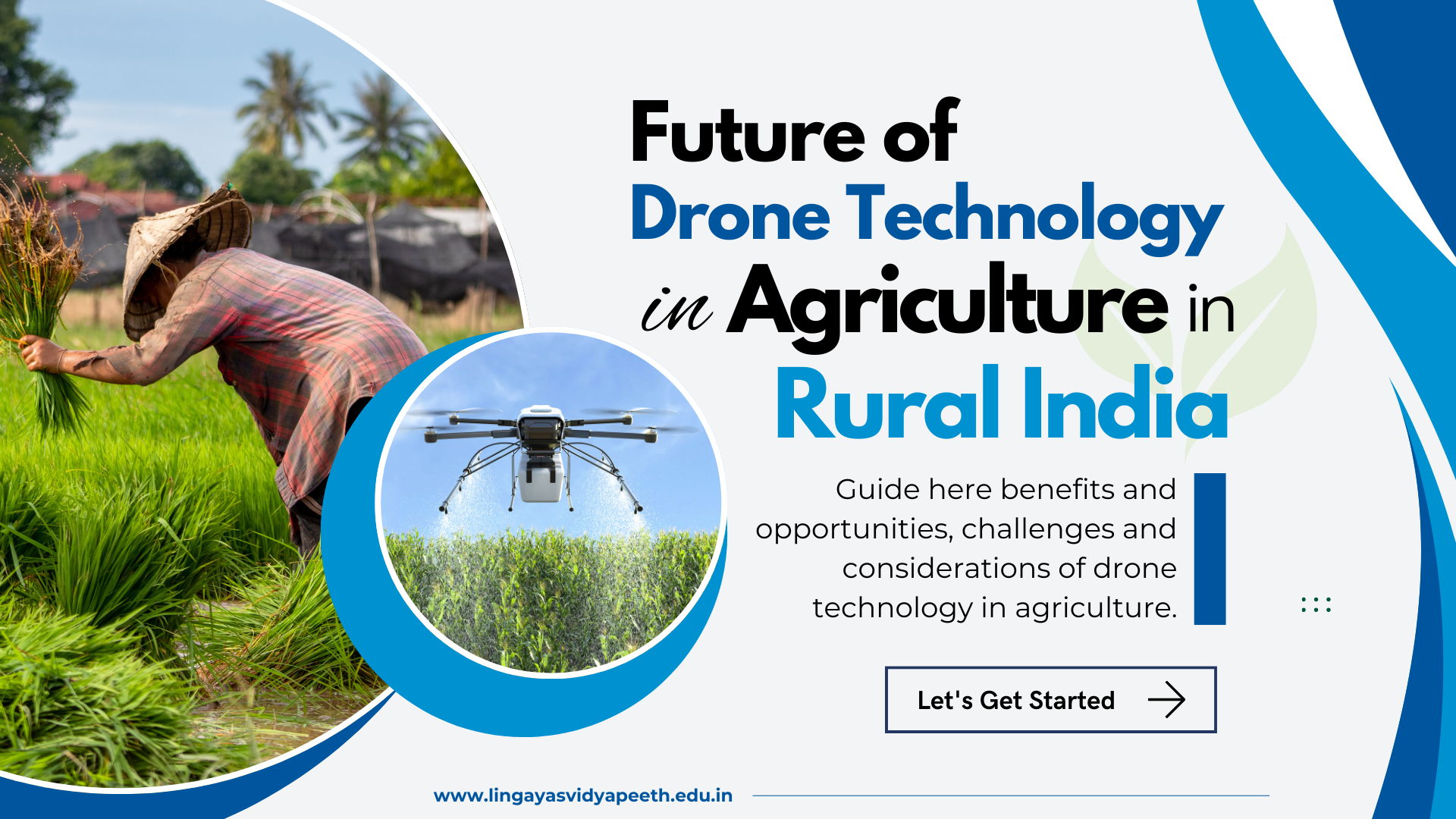Home » The Future of Drone Technology in Agriculture in Rural India

In the vast and varied landscapes of rural India, agriculture remains the backbone of the economy, providing livelihoods to millions of farmers and sustenance to a booming population. However, amidst the challenges of climate change, resource scarcity, and increasing demand for food, farmers are constantly seeking innovative solutions to enhance productivity, optimize resource use, and mitigate risks.
In recent years, drones have emerged as a game-changing technology with the potential to revolutionize agriculture in rural India, offering a range of benefits and opportunities while also posing unique challenges and considerations.
Drones, also known as unmanned aerial vehicles (UAVs), are versatile aerial platforms equipped with cameras, sensors, and other payloads that can capture high-resolution imagery, collect data, and perform various tasks with precision and efficiency. In agriculture, drones offer numerous benefits and applications that can help farmers overcome challenges and improve farm management practices.
Transforming Agriculture with Artificial Intelligence
While drones hold immense potential for transforming agriculture in rural India, their widespread adoption faces several challenges and considerations, including:
Despite the challenges, there are several notable examples of successful drone applications in agriculture in rural India:
–> Crop Monitoring in Maharashtra
In Maharashtra, farmers are using drones equipped with multispectral cameras to monitor crop health, detect nutrient deficiencies, and optimize fertilizer applications, leading to improved yields and resource use efficiency.
–> Pest Management in Punjab
In Punjab, drones are being used to scout for pests, such as the notorious crop-eating locusts, and to deliver targeted pesticide sprays, reducing the need for broad-spectrum chemicals and minimizing environmental impact.
Meet the Farmers: Stories of Resilience and Innovation
Conclusion:
Drones have the potential to revolutionize agriculture in rural India, offering a range of benefits and opportunities for farmers to enhance productivity, optimize resource use, and mitigate risks. By harnessing the power of drones, farmers in rural India can navigate the skies of opportunity, embracing innovation, sustainability, and resilience in the pursuit of a brighter future for agriculture and food security.
Cultivate your future at Lingaya’s Vidyapeeth! It is being one of the Best Colleges in Faridabad for BSc Agriculture and MSc Agriculture that helps you to master future-focused AgTech, sustainability, & diverse specializations. Gain hands-on experience & network with industry leaders. Shape a food-secure future. Choose Lingaya’s Vidyapeeth to grow your potential, apply now!
From
Dr. Ravi Prakash Mishra
Asso. Prof./ Head
School of Agriculture
Lingaya’s Vidyapeeth
Agriculture Colleges in Delhi NCR
RECENT POSTS
CATEGORIES
TAGS
Agriculture Agriculture future AI Architecture artificial intelligence BA English BA Psychology BTech CSE BTech Engineering Business management career Career-Specific Education career guide Career Opportunities career option career scope Civil engineering commerce and management Computer Science Computer science engineering Data science degree education Engineering Engineering students English Literature english program Exam tips Fashion Design Fashion design course Higher Education Journalism journalism and mass communication law Law career Machine Learning MA Psychology Master degree mathematics MBA Mechanical Engineering Pharmacy Psychology Research and Development students
University Address: Nachauli, Jasana Road, Faridabad, Haryana
Toll Free: 1800-120-4613
Mobile : 8447744303 | 8447744304 | 8447744306 | 8447744309
Address: C-72, Second Floor, Shivalik, Near Malviya Nagar,
Above HDFC Bank, New Delhi 110017
Ph.No. - 011-46570515 / 45138169 / 41755703 / +91-7303152412
Jagmani Kutir, Ground Floor, Road No-1, Rajeev Nagar,
Near Darbar Marriage Hall, Patna-800024, Bihar
Contact No: 9818352069/8130120095
Mail: [email protected]
Copyrights © 1998 - 2025 Lingaya's Vidyapeeth (Deemed To Be University). All rights reserved.
It is important to note that the following email IDs and domains are fraudulent and do not belong to our university.
LV only conducts physical/online verification of any document related to examination on the following email id: